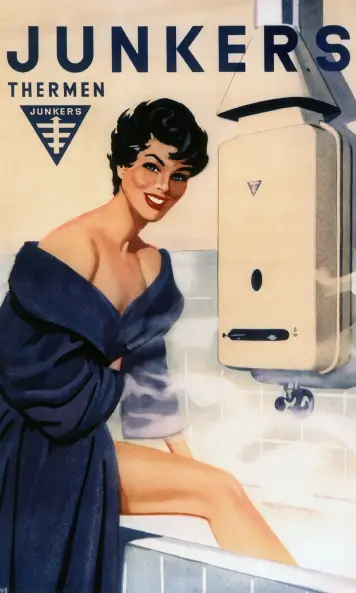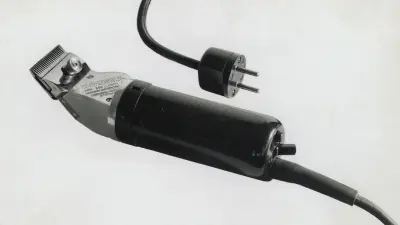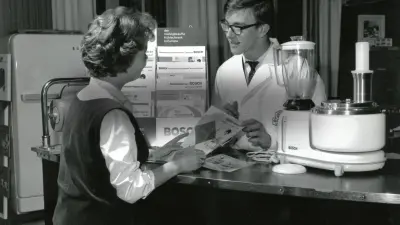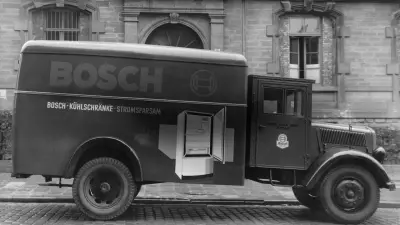Warming up water and rooms: The Junkers combi boiler

Central heating for apartments and running hot water are taken for granted these days. Yet these technological achievements only came about a little over a century ago.
And it took time for them to find popular acceptance. In the end, the breakthrough came when the two were combined — in the form of the combi boiler introduced by Bosch Thermotechnology in 1966, under the Junkers brand name. The road to this Junkers innovation began in the 19th century — with a new kind of boiler for bathrooms and kitchens, and with the first forms of central heating.
In 1892, the technological pioneer Hugo Junkers patented a device called the calorimeter, which was able to precisely determine the calorific value of a gas. This invention provided the necessary basis for constructing a new kind of gas-fired bath stove, which Junkers sought to patent in 1894. The stove was used to heat running water continuously and precisely to the required temperature for a hot bath, for example, or for washing hair under the shower at a constant temperature.
All-in-one
The idea of a combination of both heating system and domestic water heater, even though created in the 1920ies, became interesting for manufacturer in the 1950s. Junkers, one of Europe’s leading manufacturers of heating systems, had an extensive product portfolio at the time. The range extended from small electrical water heaters for kitchen use, to gas-fired boilers for bathrooms, to gas-fired central heating systems. But Junkers did not yet offer any combined devices, even though its engineering departments were already working on them.
In 1962, Junkers unveiled the “Bremen system” in partnership with that city’s public utility company. It comprised a small central heating system for single-family homes, equipped with a powerful boiler for heating water, a circulating pump, and a thermostat. This meant it could switch between feeding hot water into the radiators and heating water for household use. It was the blueprint for the ZW 20 launched in 1966 — “Z” for Zentralheizung (central heating), “W” for Wärme (heat), and 20 kilowatts maximum output.
Fits into any closet

The boiler had two interlinked circulatory systems — one for the through-flow of fresh water, which was heated in a heat exchanger and could then be drawn using a faucet. It “produced on demand” — once the faucet was opened, the circulating pump for hot water kicked in. Water also circulated in the other, closed system, where it was heated by the burner and then flowed through pipes to the radiators. After cooling, it returned to the burner for re-heating.
This technology offered two advantages in one. First, there was no perceptible drop in temperature when hot water was used simultaneously for heating rooms and supplying hot water. In the heat exchanger with its separate sets of pipes for room heating and hot water, only a small amount of the water that was otherwise needed for room heating helped heat the required shower or bathing water. Second, users saved money and had more space for other devices. There was no longer any need to clutter apartments with a boiler and separate water heaters for the bathroom and kitchen. The combi boiler also appeared at just the right time. During the second half of the 1960s, swathes of apartments were being renovated in many central European countries. They were technically completely outdated and still fitted with heating stoves. Some did not even have any means of heating water apart from boiling a kettle. And combi boilers were just as suitable for installing in these apartments as in new buildings. At 40 centimeters across, the combi boilers were only as wide as two sheets of A4 paper. This ability to fit into the smallest of spaces was one of the many reasons they quickly caught on.
Author: Dietrich Kuhlgatz



